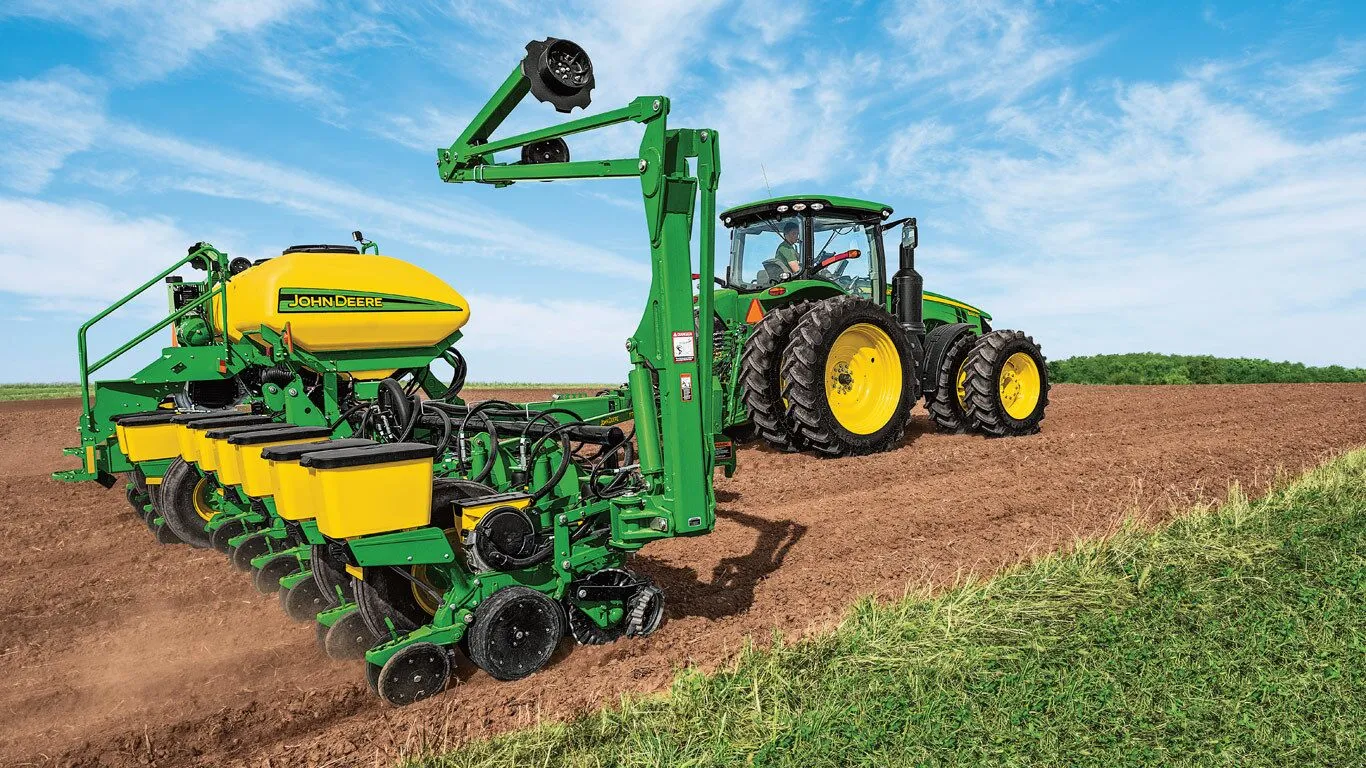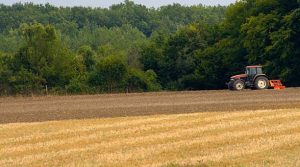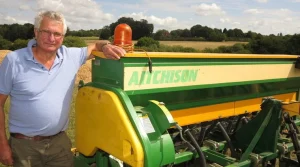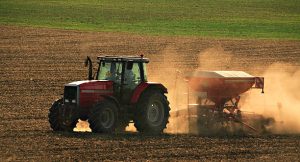In the vast landscape of agriculture, the future is being shaped by technological innovations, and one such revolutionary advancement is the seed drill. This essential tool has evolved significantly over the years, transforming the way farmers sow seeds and manage their crops. In this article, we will delve into the evolution, features, benefits, and the promising future of seed drills, exploring their impact on sustainable agriculture and global food security.
1. Brief Overview of Farming Technology
Agriculture has come a long way from manual labor to highly mechanized processes. Technological advancements have played a pivotal role in increasing efficiency, reducing resource consumption, and improving crop yield.
2. Importance of Seed Drills in Modern Agriculture
Among the various innovations in farming technology, seed drills stand out for their crucial role in optimizing the seeding process. These machines have become indispensable for modern farmers, offering precision and efficiency that manual methods can’t match.
Evolution of Seed Drills
1. Historical Context
The journey of seed drills dates back centuries, with early manual versions requiring significant human effort. The need for a more efficient and less labor-intensive solution paved the way for continuous innovation.
2. Early Manual Seed Drills
The earliest seed drills were simple yet revolutionary, allowing farmers to sow seeds in rows with minimal effort. However, these early models had limitations in terms of precision and speed.
3. Technological Advancements Over the Years
As technology progressed, so did seed drills. From horse-drawn implements to tractor-mounted versions, each iteration brought improvements in seed placement accuracy and overall efficiency.
Features of Modern Seed Drills
1. Precision Seeding
Modern seed drills incorporate precision seeding technology, ensuring accurate seed placement and spacing. This precision not only optimizes crop growth but also minimizes resource wastage.
2. Variable Rate Technology
The integration of variable rate technology allows farmers to adjust seeding rates based on specific field conditions. This adaptability enhances efficiency and promotes optimal crop development across diverse terrains.
3. Automation and GPS Integration
Seed drills equipped with automation and GPS integration enable farmers to program and monitor the seeding process with unparalleled accuracy. This level of automation minimizes human error and contributes to the overall efficiency of the farming operation.
Benefits of Seed Drills
1. Increased Efficiency
The efficiency gains offered by modern seed drills are substantial. Compared to traditional broadcasting methods, seed drills ensure precise seed placement, leading to improved germination rates and ultimately higher crop yields.
2. Conservation of Resources
The controlled and targeted approach of seed drills minimizes the use of seeds, fertilizers, and water. This conservation of resources not only benefits the environment but also contributes to cost savings for farmers.
3. Improved Crop Yield
The combination of precision seeding, variable rate technology, and automation results in healthier and more uniform crop stands. This, in turn, leads to increased overall crop yield and improved quality.
Challenges and Solutions
1. Environmental Concerns
The adoption of technology in agriculture raises concerns about its environmental impact. However, ongoing research and development focus on mitigating these concerns through sustainable practices and eco-friendly innovations.
2. Maintenance Issues
Like any machinery, seed drills require maintenance. However, advancements in design and materials, coupled with improved training for farmers, are addressing maintenance challenges, ensuring longevity and reliability.
3. Technological Solutions
Continuous improvements in technology aim to address challenges and enhance the performance of seed drills. Innovations such as self-monitoring systems and predictive maintenance tools contribute to smoother operations.
Impact on Sustainable Agriculture
1. Reduced Environmental Impact
Modern seed drills play a crucial role in sustainable agriculture by minimizing the environmental footprint. Precision seeding reduces the need for excess inputs, preventing soil degradation and minimizing the impact on surrounding ecosystems.
2. Precision Farming for Sustainability
The precision offered by seed drills aligns with the principles of precision farming, allowing farmers to optimize resource use, reduce waste, and contribute to a more sustainable and eco-friendly agricultural landscape.
3. Conservation Tillage Practices
The adoption of seed drills encourages conservation tillage practices, where minimal soil disturbance is necessary for planting. This approach helps retain soil moisture, prevent erosion, and promote long-term soil health.
Future Innovations
1. AI Integration in Seed Drills
The future promises even more advanced seed drills with artificial intelligence (AI) integration. AI algorithms can analyze data from various sources to optimize planting strategies, considering factors such as weather patterns and soil conditions.
2. Robotics in Agriculture
Robotics is poised to play a significant role in the future of farming technology. Robotic seed drills equipped with machine vision and autonomous navigation capabilities can enhance efficiency and reduce the need for human intervention.
3. Predictive Analytics for Crop Management
The integration of predictive analytics will empower farmers to make data-driven decisions regarding crop management. This includes predicting disease outbreaks, optimizing irrigation schedules, and adapting planting strategies based on evolving climatic conditions.
Case Studies
1. Successful Implementation Stories
Examining real-world case studies provides insights into how farmers have successfully integrated seed drills into their operations. These stories showcase increased efficiency, improved yields, and positive economic outcomes.
2. Increased Crop Production and Farmer Success
Specific examples of farmers experiencing increased crop production and overall success after adopting modern seed drills underscore the transformative impact of these technologies on agricultural livelihoods.
Economic Implications
1. Cost-Effectiveness of Seed Drills
The economic benefits of seed drills extend beyond the farm. By reducing the need for excess inputs and improving overall efficiency, these tools contribute to cost-effectiveness, positively impacting the financial well-being of farmers.
2. Economic Benefits for Farmers
Farmers adopting modern seed drills often experience a positive return on investment. The combination of increased crop yields, reduced resource consumption, and improved efficiency translates into economic benefits that support sustainable agricultural practices.
3. Global Impact on Agriculture
The widespread adoption of advanced farming equipment, including seed drills, has a global impact on agriculture. As more regions embrace these technologies, there is a collective contribution to global food security and economic stability.
Farmer Adoption and Training
1. Challenges Faced by Farmers
While the benefits of seed drills are evident, farmers may face challenges in terms of initial adoption, especially if they are accustomed to traditional methods. Addressing these challenges requires targeted education and support.
2. Importance of Education and Training
Training programs that educate farmers about the operation, maintenance, and benefits of seed drills are essential. Governments and agricultural organizations play a crucial role in facilitating these educational initiatives to ensure successful adoption.
3. Government Initiatives and Support
Government support, in the form of subsidies, incentives, and extension services, can significantly accelerate the adoption of modern farming technologies. Policymakers recognizing the long-term benefits of these innovations contribute to a thriving agricultural sector.
Future Challenges and Opportunities
1. Adapting to Climate Change
Climate change poses challenges to agriculture, requiring innovative solutions. The future of farming technology, including seed drills, must adapt to changing weather patterns, ensuring resilience and sustainability in the face of climate-related challenges.
2. Global Food Security
Ensuring global food security is a complex challenge. The future of farming technology, with a focus on precision, efficiency, and sustainability, presents an opportunity to address this challenge and contribute to a more secure food supply.
3. Potential Breakthroughs in Farming Technology
Anticipating and addressing potential breakthroughs in farming technology is essential. Research and development efforts must remain dynamic to harness emerging technologies that could further enhance the capabilities of seed drills and related equipment.
Expert Opinions
1. Insights from Agricultural Experts
Experts in the field of agriculture offer valuable perspectives on the trajectory of farming technology. Their insights provide a deeper understanding of the challenges, opportunities, and transformative potential of seed drills in shaping the future of agriculture.
2. Perspectives on the Future of Farming Technology
Gathering opinions from thought leaders helps paint a comprehensive picture of the future. Understanding the expectations and aspirations of experts guides ongoing research and development efforts in the agricultural technology sector.
Conclusion
1. Recap of Key Points
In conclusion, the journey of seed drills from manual implements to advanced technological marvels signifies a transformative era in agriculture. The evolution, features, and benefits discussed showcase the pivotal role seed drills play in shaping the future of farming.
2. The Promising Future of Farming Technology
The future holds exciting possibilities with the continued integration of artificial intelligence, robotics, and predictive analytics in seed drills. These innovations not only address current challenges but also position agriculture as a dynamic and sustainable industry.
FAQs
-
How do seed drills contribute to sustainable agriculture?
Seed drills contribute to sustainable agriculture by promoting precision seeding, reducing resource consumption, and encouraging conservation tillage practices, minimizing environmental impact.
-
Are there any disadvantages to using modern seed drills?
While modern seed drills offer numerous advantages, challenges may include initial adoption hurdles, maintenance requirements, and the need for farmer education. Overcoming these challenges is crucial for maximizing benefits.
-
What is precision farming, and how does it relate to seed drills?
Precision farming involves optimizing resource use for crop production. Seed drills play a vital role in precision farming by ensuring accurate seed placement, leading to efficient resource utilization and improved crop yields.
-
How can farmers access training for adopting new agricultural technologies?
Farmers can access training through government-sponsored programs, agricultural extension services, and collaborations with agricultural organizations. These initiatives aim to educate farmers on the operation and benefits of modern agricultural technologies.
-
What role does the government play in promoting advanced farming equipment?
Governments play a crucial role in promoting advanced farming equipment through subsidies, incentives, and support programs. These measures aim to encourage farmers to adopt modern technologies for sustainable and efficient agriculture.






